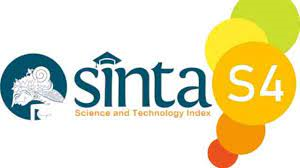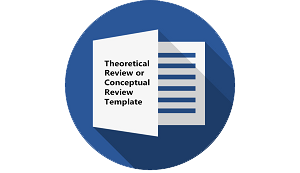Picture Word Inductive Model to Improve the Ability of the Procedure Writing of MTs Students
DOI:
https://doi.org/10.30957/ijoltl.v5i3.636Keywords:
Learning Outcomes, Procedure Text, Picture Word Inductive ModelAbstract
This study aims to improve the students’ outcomes in learning to write English procedural texts through the Picture Word Inductive Model (PWIM). The research subjects were 27 students of MTs Negeri 1 Jepara. This research was conducted in 3 cycles in which the students worked in groups of four. In first cycle, the students describe a picture of a certain food or drink menu using the PWIM, while in second cycle the students explain the procedure of making food/drink recipes as in cycle 1. In the third cycle, the students ask for or provide information on food/beverage recipes using the PWIM. Data collection was carried out simultaneously with observation during the action, while the data analysis was carried out simultaneously at the time of reflection on the action. From the results of analysis/reflection, it reveals whether the action will be terminated (if it has reached the target) or continues to achieve the target. The data analysis was performed using the triangulation method. The results showed that there was an increase in student learning outcomes in participating in learning English writing with the PWIM. In the original situation, there were only 8 students (22.22%) out of 27 students who could describe certain objects/people/ places. In the first cycle of action, there were 10 students (37.04%) who could make the procedure text more correctly. In the second cycle, 17 students (62.96%) could write procedural texts correctly. In the third cycle, there was an increase in student learning outcomes. There were 27 students (100%) who could write the procedural text correctly.
Downloads
References
Arikunto, S., Suhardjono, & Supardi. (2006). Penelitian Tindakan Kelas. Jakarta: PT Bumi Aksara.
Bateman, B. (1981). Reviews: The Cambridge Guide to Second Language Teacher Education. The Modern Language Journal, 65(2), 203–240. https://doi.org/10.1111/j.1540-4781.1981.tb00975.x
Brown, H. D. (2018). Language Assessment: Principles and Classroom Practices. In Pearson Education, Inc. (1st ed.). Longman. www.longman.com
Celce-Murcia, M., Brinton, D., & Snow, M. A. (2014). Teaching English as a second or foreign language (p. 706).
Depdiknas. (2003). Standar Kompetensi Mata Pelajaran Bahasa Inggris Sekolah Menengah Pertama dan Madrasah Tsanawiyah. Jakarta: Direktorat Pendidkan Dasar dan Menengah.
Depdiknas. (2010). Pedoman Penulisan. Buku Bahasa Inggris SMP/SMA. Naskah pada Pusat Perbukuan. Jakarta: Pusat Perbukuan Depdiknas.
Dykstra, G. (n.d.). Eliciting Language Practice in Writing -.
Ferrance, E. (2000). Action Research (1st ed.). Brown University.
Flowerdew, J. (2012). English for Research Publication Purposes. In The Handbook of English for Specific Purposes (pp. 301–321). https://doi.org/10.1002/9781118339855.ch16
Fueyo, V., & Koorland, M. A. (2007). Teacher as researcher: A synonym for professionalism. Journal of Teacher Education, 48(5), 336-338.
Gie, T. L. (2002). Terampil Mengarang. Yogyakarta: Balai Pustaka.
Gifford, C., & Huff, J. (1979). Using an Isntructional Management System to Teach Writing Skills. NASSP Bulletin, 1, 1–476. https://doi.org/10.1017/CBO9781107415324.004
Hammond, J. e. (2012). English for Social Purposes: a Handbook for teachers of Adult Literacy. Sydney: NCELTER.
Harmer, J. (2008). How to Teach English. London: Longman.
Herlinawati, & Hidayati. (2014). Picture Inductive Word Model (PWIM): Improving Students’ Ability in Writing a Descriptive Paragraph. ELT-Lectura, 1(2), 9–14. https://doi.org/10.31849/elt-lectura.v1i2.452
Joyce, B., & Weil, M. (2009). Models of Teaching, Second Edition. New Jersey: Prentice Hall Inc.
Klein, S. R. (2012). Action Research Methods: Plain and Simple (1st ed.). Palgrave Macmillan US.
Novia, F. (2015). Promoting Picture Word Inductive Model ( PWIM ) to Develop Students ’ Writing Skill. Premise Journal, 4(1).
Rust, F., & Clark, C. (2007). How to do action research in your classroom; lessons from the teachers network leadership institute.
Suparno, Y. M. (2002). Keterampilan Dasar menulis. Jakarta: Universitas Terbuka.
Suriamiharja, A. (2007). Dasar-Dasar Keterampilan Menulis. Bandung: Angkasa.
Tarigan, H. G. (2008). Membaca Sebagai Suatu Keterampilan Berbahasa. Bandung: Angkasa.
Thompson, P. (2013). The Handbook of English for Specific Purposes. In B. Paltridge & S. Starfield (Eds.), The Handbook of English for Specific Purposes (1st ed.). A John Wiley & Sons, Ltd., Publication. https://doi.org/10.1002/9781118339855.ch15
Downloads
Published
How to Cite
Issue
Section
License
Authors who publish with this journal agree to the following terms:
- Authors retain copyright and grant the journal right of first publication with the work simultaneously licensed under a Creative Commons Attribution-ShareAlike 4.0 International License that allows others to share the work with an acknowledgement of the work's authorship and initial publication in this journal.
- Authors are able to enter into separate, additional contractual arrangements for the non-exclusive distribution of the journal's published version of the work (e.g., post it to an institutional repository or publish it in a book), with an acknowledgement of its initial publication in this journal.
- Authors are permitted and encouraged to post their work online (e.g., in institutional repositories or on their website) prior to and during the submission process, as it can lead to productive exchanges, as well as earlier and greater citation of published work (See The Effect of Open Access).












